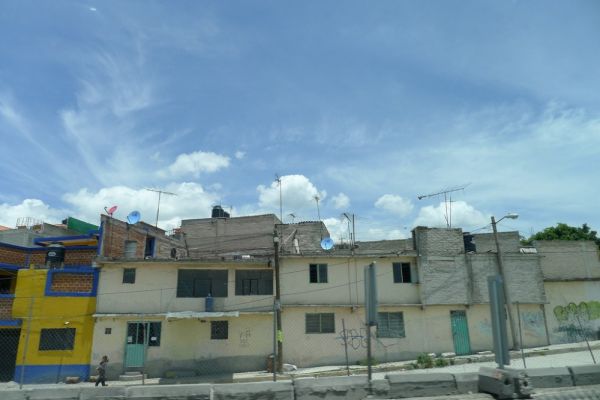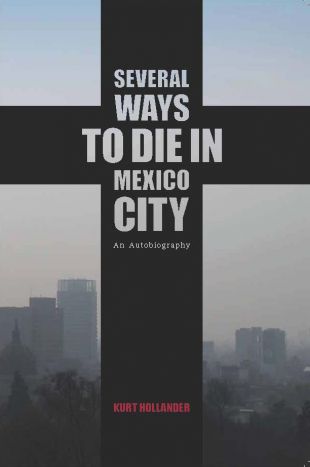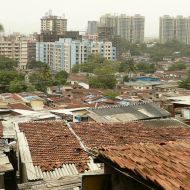The Problem With Cement Cities

Cement plays many roles in Mexico City urbanism, not all of them positive. Photo credit: minaemme via Flickr Creative Commons
In an excerpt from his new book, Several Ways to Die in Mexico City, Kurt Hollander describes how the ubiquitous cement construction found in many developing-world cities goes hand-in-hand with pollution, corruption and poorly planned development.
In the 1950s, the city government began to encourage the concentration of heavy industry within the Mexico City Valley. Up until only very recently, more than half of all the industry in the country (around 30,000 factories) was located here. Mexico City was an ideal location for factories as it had almost unlimited access to electricity, oil and other sources of energy, a seemingly endless supply of water, an efficient sewage system and solid infrastructure.
The industry most responsible for the shape and size of the city is cement. Over the last several decades, a constantly expanding sea of cement constructions has blanketed the mountain valley, stretching out in all directions and up and over the surrounding mountains. What had originally been a paradise of lakes and trees has been almost completely paved over, and in its place there now exists one of the world’s largest concrete jungles.
Mexico City has been ranked amongst the worst cities in the world in terms of urban planning, development of sustainable practices, investment in basic infrastructure and proximity of workplace to living quarters. In addition, more than half of all houses in Mexico City are located in unhealthy, unsafe areas. All of these problems can be attributed to the uncontrolled construction boom. To accommodate the annual influx of three hundred thousand immigrants into Mexico City, fifty thousand new constructions are built each year. Many of these are government-subsidized low-income housing projects, vast communities of densely packed identical cement cubes. These prefab micro-cities, often constructed in arid plains far from any services (including schools, stores or adequate transportation) have changed the landscape of the outlying areas of the city.

“Several Ways to Die in Mexico City: An Autobiography” by Kurt Hollander. Feral House, 300 pages. $22.95
Even with all the massive government-subsidized communities being built, more than one-third of all those who emigrate to Mexico City each year wind up illegally occupying the land they live on. These paracaidistas (parachutists or land grabbers) build their makeshift abodes with mostly recycled materials, including bricks, cardboard, plastic and scraps of metal. Although this self-made, outsider architecture allows the tenants to express their own individuality and create their own living space, when families attain a certain level of economic well-being they immediately lay down a cement floor and throw up four cement walls and a cement ceiling. Cement has come to be seen as a sign of superior social status, especially by immigrants from rural parts of the country. When these densely populated slums represent enough votes for local politicians to take heed, the streets are paved with concrete and cement posts are installed to bring in electrical lines. To sway local elections, bags of cement are often handed out to purchase votes.
Cement, rather than the wood, glass or steel used to build modern cities throughout the world, has been the building material of choice in Mexico City since the beginning of the 20th century. Cement became popular during the art deco architectural boom in the city mainly because it represented European modernity, but it soon became the standard construction material throughout the city because it is so cheap, resistant and easy to use.
In addition to the construction of concrete homes for people of all classes, the endless construction of huge monuments, government buildings and an ever-expanding network of avenues, highways and skyways all contribute to the thousands and thousands of tons of cement poured into the Mexico City Valley each year. The cement industry not only influences the shape and size of the city, it also directly influences its economy as the construction industry represents one-half of the gross national product.
Cement is second only to water as the most consumed substance on earth, with nearly three tons poured each year for every person on the planet. Because it is such a common substance, few people realize how much cement is involved in death in Mexico City. Cement plants alone are responsible for almost half of all industrial particulate emissions within the city. The production and use of cement disperses into the air great quantities of dust and chemicals, many toxic and carcinogenic. For several decades, and up until recently, asbestos was the insulation of choice for constructions built in Mexico City, and this toxic substance, long banned in the U.S. and Europe, combines with the chemicals emitted by concrete to reduce the functioning and longevity of human lungs.
In Mexico, the construction industry employs 7 percent of the total work force. As face masks are almost never used on construction sites in Mexico City, workers’ longterm contact with cement leads to a significant decrease in productive work years and an increase in fatal diseases such as lung cancer. In addition, the construction industry is responsible for 25 percent of all accidental deaths and injuries among workers (the biggest risks being plummeting from heights or being struck by falling objects). Poorly constructed highways and avenues are the site of innumerable traffic fatalities, while shabbily constructed concrete housing projects, hospitals and hotels lead to the greatest number of deaths during earthquakes. In Mexico City, human blood has always been mixed into the cement that covers the city.
Originally from New York City, Kurt Hollander has been living in Mexico City for over twenty years. He’s a writer, photographer, filmmaker, translator, magazine editor and owned and operated a billiards hall and a restaurant/bar. He’s written for The London Guardian, Guernica, The New York Times and The Los Angeles Times, and Letras Libres. His autobiography, Several Ways to Die in Mexico City, was just published by Feral House.





